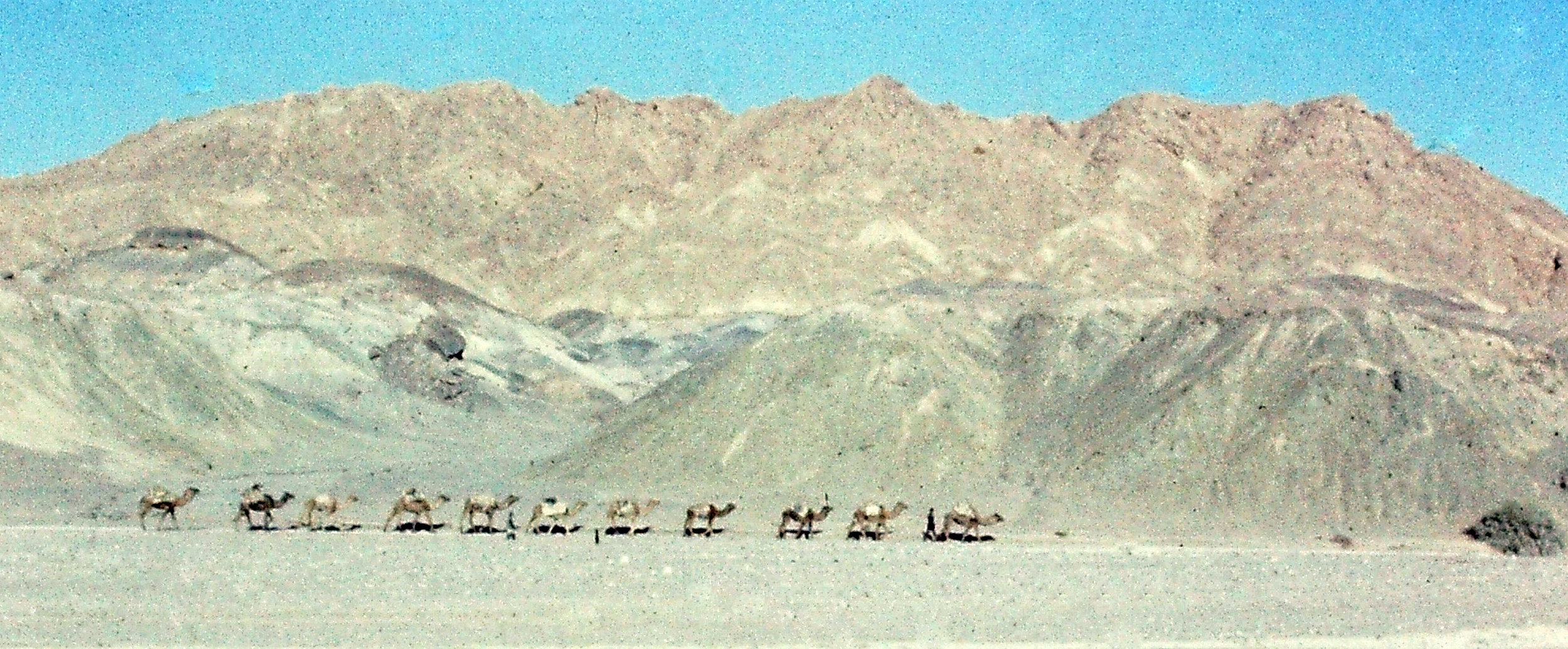End of October 1973, near Esendere, Turkey. The border was less than a mile away. We stopped by a stream to clean up before entering Iran. Little did I know that less than six years later, this would be the site of a dramatic escape from revolutionary Iran by employees of EDS, Ross Perot's computer services company. That story was chronicled in Ken Follett's book, On Wings of Eagles. Naturally, it had to serve as a location in the Raven-One Team thriller, The Caspian Intercept, to be released later in 2018.
I did not go to Tehran, we headed south to Isfahan and Shiraz before crossing the desert to Afghanistan. There was a great contrast between the cities and the countryside in Iran. People in villages live in mud huts, while people in the city were much better off. Iran seemed almost modern compared to Eastern Turkey. Some of the roads were dirt, but they were building new asphalt highways. Premium gasoline cost only 25 cents a gallon. The road signs were in Persian script and only a few signs in English. Even the road numbers were different but not hard to learn. The bread was cooked in a round flat shape like a pizza. A good meal cost about a dollar.
Isfahan was modern, except for the open sewers running between the streets and sidewalks, but at least they are concrete lined. One big treat was milk shakes. A young man had a blender set up on a stool on the sidewalk and you could have a banana shake in a minute. The big movie in town was Duel with Dennis Weaver. The one about the big truck. We camped at the YMCA across the street from a mosque.
Traffic in Isfahan was congested and wild. Taxi rides were seven cents. Took a taxi ride to a market and the driver didn’t slow down for speed bumps and ignored traffic signals and the police. At one major intersection there was lights, a traffic officer on a pedestal in the center of the street. No one including the cop paid attention to the lights, and the drivers completely ignored his directions. Somehow, everyone made it through alive.
The main bazaar in Isfahan was interesting. It was about a mile long and had just about everything one would need. Lots of stuff from China, including hand painted thermos bottles with pandas and rural scenes. One of these plays a major role in The Caspian Intercept. Isfahan was a beautiful city.
The Yom Kippur War had been over only a few weeks before and I still didn't know what had happened. The English language newspaper, The Tehran Times, was available and provided an abbreviated account of the aftermath. The paper always seemed to have a front-page story about the Shah or his family. I was told it was required.
Every town had a traffic circle with a bust of the Shah in the center. Another strange thing was a picture of the Shah emerging from a cloud, placed over almost every exit in buildings. The military had a strange combination of Soviet and American equipment. My favorite was the Soviet Gaz-69 jeep-like vehicle. It is featured in The Iranian Intercept and The Caspian Intercept.
I also visited Shiraz and the ruins of an old Persian Palace at Persepolis, just north of the city. It was 2,500 years old and parts had been restored. The sound and light show was impressive.
Kerman was something of a disappointment. I had expected to see what had described as the last preindustrial city, but since he had been there it had been seen some progress. Lots of traffic. Later. In Herat, Afghanistan, I was able to visit a real pre-industrial city.
We left Kerman and headed north into the Dasht-e Lut desert, a large salt desert, one of the hottest and driest places on earth during the summer. Since it was late fall, it was cold at night and I purchased a crude cotton stuffed quilt in a village market.
I liked Iran, the people were friendly and there was evidence of economic progress, but beneath the surface, I sensed the days of the Shah's reign were numbered. I figured the military would eventually take over. I was wrong.
Desert Caravan
Shiraz Old Friday Mosque
Persepolis
Kerman
Isfahan





